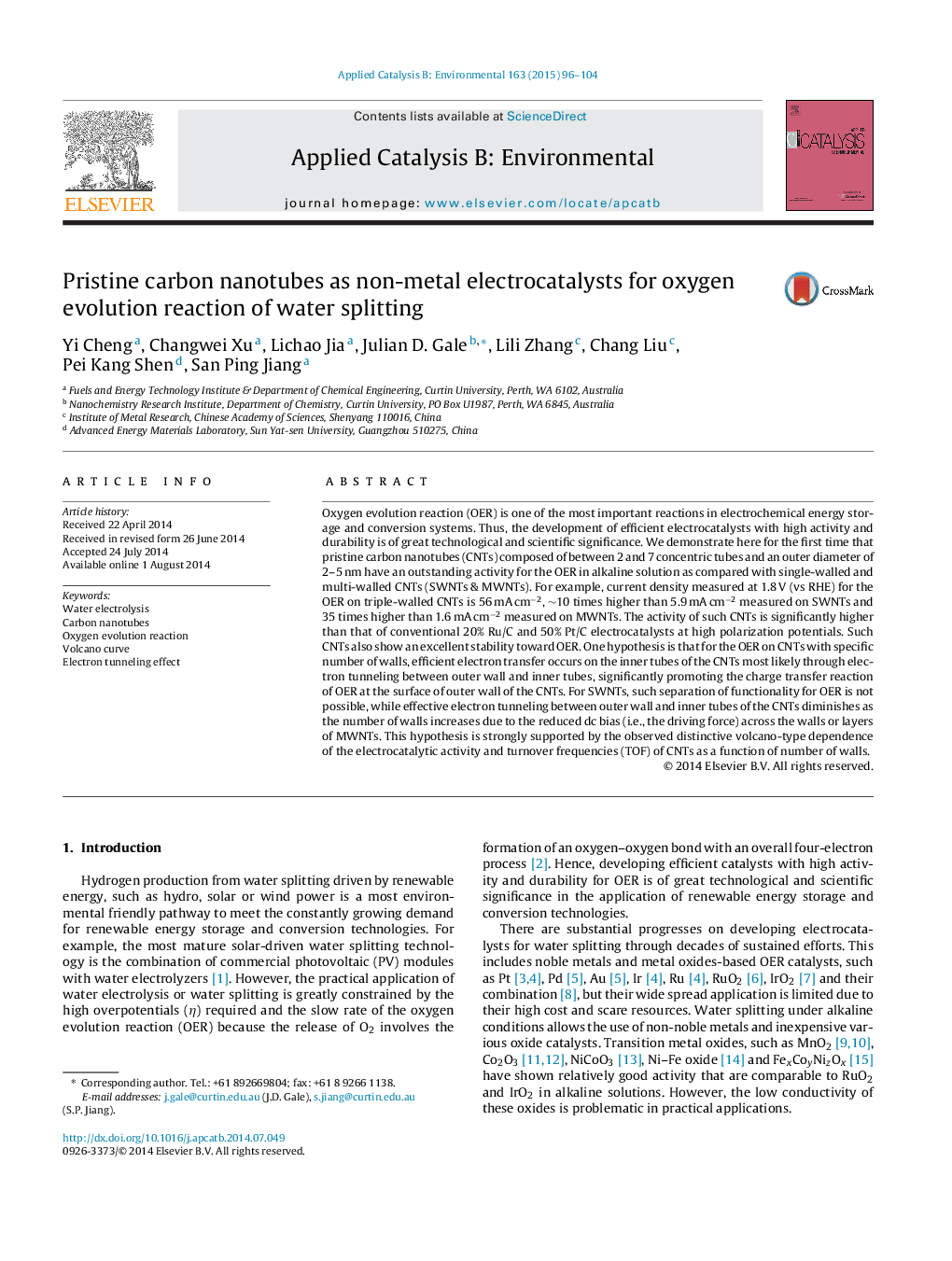| کد مقاله | کد نشریه | سال انتشار | مقاله انگلیسی | نسخه تمام متن |
|---|---|---|---|---|
| 44859 | 46375 | 2015 | 9 صفحه PDF | دانلود رایگان |
• Study of pristine carbon nanotube as electrocatalysts for oxygen evolution reaction.
• CNTs with 2–7 walls and 2–4 nm outer diameter are highly active for OER.
• High activity of CNTs with 2–7 walls is due to the dual functionality of CNTs.
• A hypothesis based on the electron tunneling effect is proposed.
Oxygen evolution reaction (OER) is one of the most important reactions in electrochemical energy storage and conversion systems. Thus, the development of efficient electrocatalysts with high activity and durability is of great technological and scientific significance. We demonstrate here for the first time that pristine carbon nanotubes (CNTs) composed of between 2 and 7 concentric tubes and an outer diameter of 2–5 nm have an outstanding activity for the OER in alkaline solution as compared with single-walled and multi-walled CNTs (SWNTs & MWNTs). For example, current density measured at 1.8 V (vs RHE) for the OER on triple-walled CNTs is 56 mA cm−2, ∼10 times higher than 5.9 mA cm−2 measured on SWNTs and 35 times higher than 1.6 mA cm−2 measured on MWNTs. The activity of such CNTs is significantly higher than that of conventional 20% Ru/C and 50% Pt/C electrocatalysts at high polarization potentials. Such CNTs also show an excellent stability toward OER. One hypothesis is that for the OER on CNTs with specific number of walls, efficient electron transfer occurs on the inner tubes of the CNTs most likely through electron tunneling between outer wall and inner tubes, significantly promoting the charge transfer reaction of OER at the surface of outer wall of the CNTs. For SWNTs, such separation of functionality for OER is not possible, while effective electron tunneling between outer wall and inner tubes of the CNTs diminishes as the number of walls increases due to the reduced dc bias (i.e., the driving force) across the walls or layers of MWNTs. This hypothesis is strongly supported by the observed distinctive volcano-type dependence of the electrocatalytic activity and turnover frequencies (TOF) of CNTs as a function of number of walls.
Figure optionsDownload as PowerPoint slide
Journal: Applied Catalysis B: Environmental - Volume 163, February 2015, Pages 96–104
